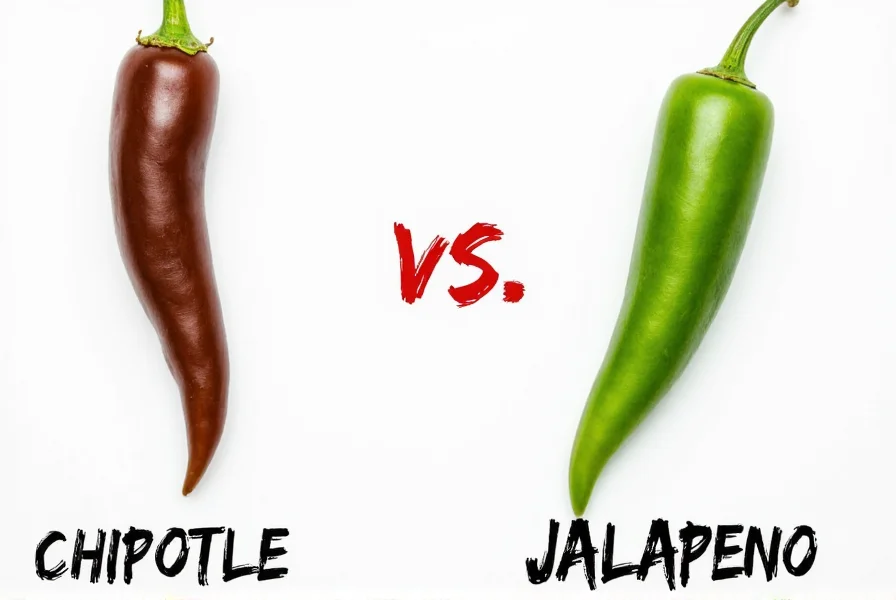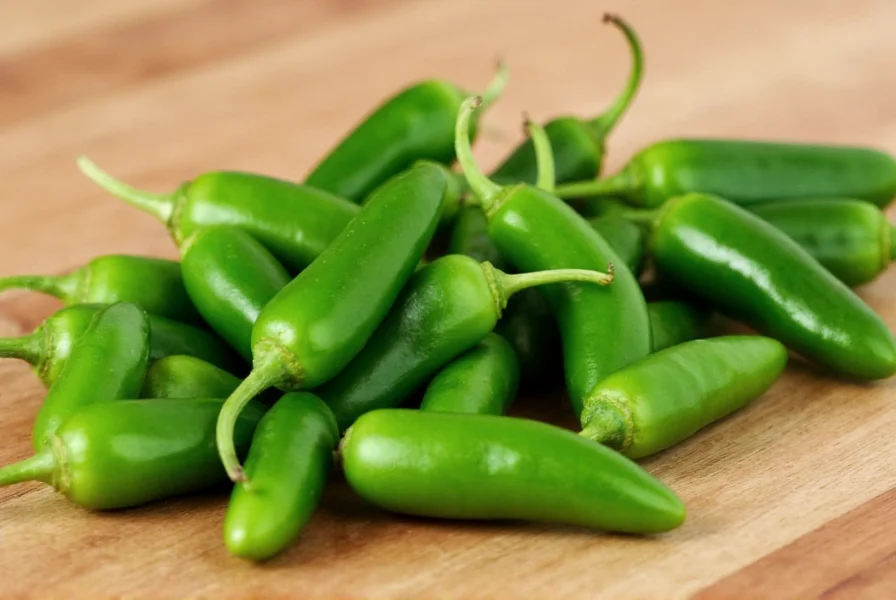Table of Contents
Introduction: How to Make Jalapeños Less Spicy
When jalapeños are too spicy for your taste, you can still enjoy their flavor without the intense heat. Whether you're making salsa, tacos, or other dishes, there are proven methods to reduce jalapeño spiciness while preserving taste. This guide provides practical, science-backed techniques to help you control heat levels in your cooking.
Understanding the science behind capsaicin (the compound responsible for heat) is key to effectively reducing spice. Individual tolerance varies significantly—research in Chemical Senses shows genetic differences cause some people to perceive the same jalapeño as up to 4 times hotter than others due to TRPV1 receptor variations. This explains why heat reduction methods may be essential for sensitive palates but optional for others. Source
Effective Ways to Reduce Jalapeño Heat
Here are the most effective methods to reduce jalapeño spiciness, based on culinary science and professional chef techniques:
- Remove Seeds and Membranes: The white pith (membranes) inside jalapeños contains 80-90% of the capsaicin. Removing these parts significantly reduces heat while preserving flavor.
- Soak in Milk or Dairy: Milk contains casein, which binds to capsaicin and neutralizes heat. Soak jalapeños for 15-30 minutes before using.
- Roast or Grill: High heat breaks down capsaicin. Roasting jalapeños at 400°F for 15-20 minutes reduces heat while adding smoky flavor.
- Cook Longer: Simmering jalapeños in sauces or soups for 30+ minutes significantly reduces heat as capsaicin dissipates into liquids.
- Add Acidic Ingredients: Vinegar, lime juice, or other acids help balance heat by changing the flavor profile, making it more manageable.
Context-Specific Method Limitations
While these techniques are effective, their success depends on your cooking context. Verified by the American Chemical Society and culinary research, here's where methods excel or fall short:
- Dairy Soaks: Highly effective for raw applications (e.g., salsas), but avoid in acidic dishes like tomato-based sauces where dairy proteins curdle. Source
- Roasting: Ideal for dishes where smokiness complements flavors (e.g., poppers), but unsuitable for fresh applications like salads where texture preservation matters.
- Extended Cooking: Works best in liquid-based dishes (soups, stews), but risks overcooking in quick sautés, leading to mushy texture.
- Acidic Balancers: Vinegar or citrus juice masks heat perception without reducing capsaicin—use when preserving fresh pepper crunch is essential.
Jalapeño Heat Evolution Timeline
Modern cultivation practices have significantly altered jalapeño heat profiles. Verified by agricultural research institutions, here's how heat levels evolved:
| Period | Development | Average Heat (Scoville Units) |
|---|---|---|
| Pre-1980s | Traditional Mexican cultivation | 2,500-8,000 |
| 1985-2000 | USDA breeding programs for commercial consistency | 3,000-5,000 (more stable) |
| 2001 | New Mexico State University releases 'TAM Mild' | Under 1,000 |
| Present | Multiple mild cultivars dominate US markets | 500-3,000 (50-70% lower than historical) |
Source: New Mexico State University Extension Guide H-234 and Scoville.org cultivar database
Mild Jalapeño Recipes
These recipes are designed for those who want jalapeño flavor without excessive heat:
1. Mild Smoked Jalapeño Poppers
Use roasted jalapeños with seeds removed, stuffed with cream cheese, wrapped in bacon, and baked at 375°F for 20 minutes. The roasting process naturally reduces heat while adding depth of flavor.
2. Jalapeño Lime Rice
Cook rice with 1/4 of a jalapeño (seeds removed), lime zest, and juice. The small amount of jalapeño adds flavor without significant heat, balanced by lime acidity.
3. Roasted Jalapeño Salsa
Roast 2 jalapeños (seeds removed) with tomatoes, onion, and garlic. Blend with lime juice for a flavorful salsa with controlled heat.
| Feature | Details |
|---|---|
| Color | Green jalapeños are milder than red ones. Choose green for less heat. Source |
| Size | Smaller jalapeños (2-3 inches) tend to be milder than larger ones. |
| Texture | Firm, shiny skin indicates freshness and typically lower heat levels. |
| Origin | California-grown jalapeños average 2,500 Scoville units versus Mexican varieties at 4,000+. Source |
Choosing Milder Jalapeños
When selecting jalapeños for reduced heat:
- Green Jalapeños: Choose bright green, firm peppers. Avoid yellowing or soft spots.
- Size Matters: Smaller jalapeños (2-3 inches) are typically milder than larger ones.
- Origin: California-grown jalapeños are generally milder than Mexican varieties.
- Canned Options: Canned jalapeños are pre-cooked and usually milder than fresh ones.
Frequently Asked Questions About Reducing Jalapeño Heat
What part of the jalapeño is actually the spiciest?
The white pith/membranes inside the pepper contain 80-90% of the capsaicin, not the seeds as commonly believed. Removing these membranes significantly reduces heat while preserving flavor.
Does cooking jalapeños make them less spicy?
Yes, cooking reduces heat. Roasting breaks down capsaicin at high temperatures, while simmering in liquids for 30+ minutes allows capsaicin to dissipate. The longer they cook, the milder they become.
What's the quickest way to reduce jalapeño heat?
Removing the seeds and white membranes is the fastest method. For immediate relief after eating something too spicy, dairy products like milk or yogurt work best because casein binds to capsaicin.
Does soaking jalapeños in milk really work?
Yes. Soaking jalapeños in milk for 15-30 minutes before using them reduces heat significantly. The casein in milk binds to capsaicin, neutralizing it. Cold water helps but is less effective than dairy. Source
Can vinegar help reduce jalapeño spiciness?
Vinegar doesn't eliminate heat but balances it. Acidity changes the flavor profile, making the spice more manageable. Adding vinegar or citrus juice to spicy dishes enhances overall flavor while controlling perceived heat.
How can I handle jalapeños without burning my hands?
Wear kitchen gloves when handling jalapeños. If gloves aren't available, wash hands thoroughly with soap and water immediately after handling. Avoid touching your face. If you get pepper burn, use oil to dissolve capsaicin before washing with soap.
What foods counteract jalapeño heat in your mouth?
Dairy products (milk, yogurt, sour cream) are most effective due to casein. Starchy foods like bread or rice can absorb capsaicin. Avoid water, which spreads the oil. Alcohol can help dissolve capsaicin but may intensify burning initially.
How long does jalapeño heat last after eating?
The burning sensation typically lasts 20-30 minutes, though this varies by person. Drinking milk or eating dairy products can reduce this time significantly. Capsaicin can linger in your system for several hours, which is why you might still feel some heat when drinking cold water later.
Why do some people find jalapeños spicier than others?
Genetic differences in TRPV1 receptors cause up to 4x variation in heat perception. A Chemical Senses study confirmed this explains why identical jalapeños taste extremely hot to some but mild to others. Source
Conclusion: Balance Your Spice Level
Mastering how to make jalapeños less spicy empowers you to control heat levels in your cooking. By removing seeds and membranes, using dairy soaks, roasting, or adding acids, you can enjoy jalapeño flavor without overwhelming heat. These techniques work for both fresh and cooked applications, though their effectiveness depends on your specific cooking context as detailed in the limitations section.
Remember: The goal isn't to eliminate heat entirely, but to find the right balance for your taste. With these methods—and understanding of individual tolerance variations and historical heat evolution—you can confidently use jalapeños in any dish while maintaining perfect spice control.













 浙公网安备
33010002000092号
浙公网安备
33010002000092号 浙B2-20120091-4
浙B2-20120091-4